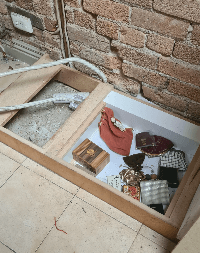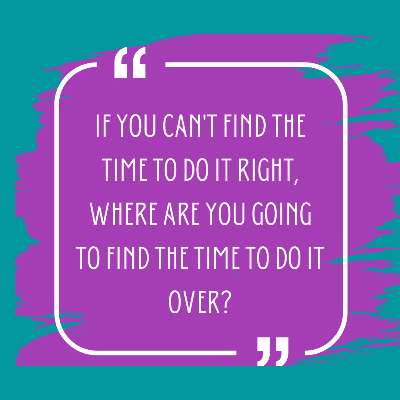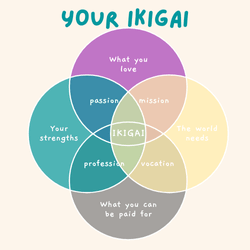The simple reality is D-I-Y isn’t for everybody. Not because they can’t. Definitely not because they’re women. But maybe because they don’t want to, don’t like it, or the time spent is too costly when there is more value elsewhere.
But typically there’s only one way to know which basket you fall into: to have a go!
Below are some of the lessons I’ve learned on my own journey from dabbler to professional D-I-Yer. If the idea of getting handy has crossed your mind, start with my 6 tips for a beginner.
Getting started in D-I-Y as a complete novice can be both intimidating and overwhelming. The volume of information available out in the world is like a fire hose. That’s not really a good thing, especially when you start. Why not?
- Is the information from a reliable source? (How do I sort the good from the bad?)
- Does it relate to my particular scenario?
- Is there a level of assumed knowledge that means I miss important details?
- Is it timely? (What’s the point in a workshop in 2 months when I need to learn a skill now.)
- How do you search for something online if you don’t know what it’s called? (AI, such as Chat GPT or Google’s Gemini can help with this!)
Then there’s the fact that everything looks easy on the internet – especially on social media! But a tip from an insider….it’s probably not. Things go wrong all the time. For everybody, no matter how experienced you are. Because life.
Knowing how to fix things when it doesn’t go to plan is seriously just as important as knowing how to do the thing. But mostly, this is learned through experience. Good old trial and error! Lots of error!
Tip #1: Look for comprehensive resources that cover off troubleshooting.
D-I-Y books published by actual publishing houses often have this level of detail.
[For a great starting point to find great resources, try my e-Guide ‘Getting Started in D-I-Y']
One of the first, and most important, lessons I learned when I jumped into this world is there are a dozen ways to do a thing. Rarely is there one ‘right way’. Getting to the result is what matters. A long term result is different to a quick fix though, right? We’ve all witnessed the dodgy ‘landlord special’. Just as you think you have a grasp on something, you hear contrary advice, or some caveat, or you tried it exactly as described and it didn’t work for you. It’s probably not that it is wrong – but there is no universality when it comes to the built environment.
Tip #2: Expect a steep learning curve. Tap into a diversity of resources.
You do get better with practice too. Don’t be discouraged by failed attempts.
Keeping in mind Tip #2, everyone is a critic! I follow a LOT of trade, woodworking and D-I-Y accounts on Instagram, and without fail, for every video posted by someone sharing their work, there are an offensive number of comments telling them they’re doing it wrong! Or it could be done better. Or differently. And, if you’re a woman posting, watch out for the misogyny on top. But when it comes to D-I-Y, you know about your house, or your personal preferences, or your way of using the space.
Tip #3: It’s OK to have a go and do it your own way.
There is learning to be had, but also sometimes you’ve just got to ignore the haters
(even if they’re your husband, in-law, or dad!).
Similar to above, everybody is an expert on the internet, apparently. And whilst there is no denying that professionals have more knowledge, greater experience, and genuine insights into what works and what doesn’t, nobody knows everything. Europeans build differently to Aussies, and Americans have access to other products. Heck, Victoria has different regulations to NSW, and the timber you can source locally in Cairns isn’t available in Perth.
Tip #4: Keep an open yet critical mind about the who, where and what of your info source/s, and adjust accordingly.
Take what’s useful from and discard what’s not.
For me as a handywoman, every project and every client’s home is new. No matter if the task is ostensibly the same, the building itself isn’t. The era in which it was built can vary the job enormously, for example. When you do maintenance, home improvements, and renovations, you’re dealing with retrofits. It’s a very different beast to a new build, where the materials are more uniform, the regulations are standardised, the process is more streamlined and you’re starting with a blank canvas. Doing D-I-Y, by nature lends itself to surprises. Rarely good ones! You find all kinds of weirdness in old houses.

(photo from an actual client's new home - we removed the oven cabinet and found this sealed underneath!)
As I said up top, things don’t often go to plan. Workarounds are often required. That means more learning, more experimenting. It’s been claimed it takes 10,000 hours to master something. Personally, I feel like it’s a lifelong journey.
Tip #5: Time and patience are the most valuable resources in D-I-Y.
If you need it done yesterday, or without stress and frustration, pay someone to take on those burdens on your behalf!

The learning curve with D-I-Y should not be underestimated. Although some people are ‘naturals’ or take to the task with vigour, in all likelihood your first attempts will probably be a bit sh*t. Or if not bad, not exactly good. The question to ask yourself is, what standard am I prepared to accept? Doing something by your own hands is extremely rewarding, but like the drawings of kindergarteners, or the first attempt at wheel pottery, the results are in the eye of the beholder.
Tip #6: Don’t expect perfection with D-I-Y – you probably need to be ok with ‘good enough’, at least for a while.
You can pay for expertise if you’re the type of person who prefers high quality,
or be prepared to spend a lot of time and effort to produce it yourself.
The unfortunate truth is not everybody is good at this D-I-Y stuff. Using tools, fixing things, building – these are not innate skills. She Bangs is all about emboldening women to have a go. I promote the idea that your gender is not the determining factor about whether you’ll have talents or ability. It’s not hard to try, but it can be a challenge to be good. Perhaps after you’ve tried D-I-Y, you realise you actually don’t enjoy the process, with all its frustrations, and the reward of accomplishment doesn’t outweigh the tedium of the task.
There is no shame in discovering D-I-Y is not for you. You don’t have to like it, even if you like the idea of it. We all have our strengths, and sometimes our efforts are better spent cultivating the things we love, we are good at, and that bring value.

Decided you want to get started in D-I-Y? I have an e-Guide to help you get navigate the cocophony.
